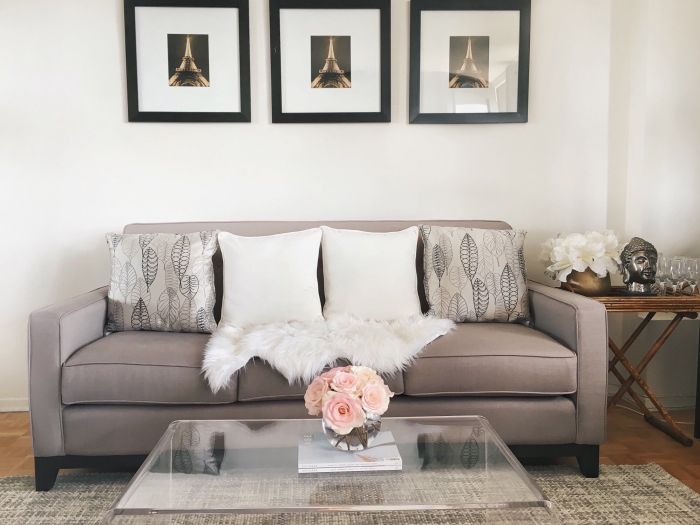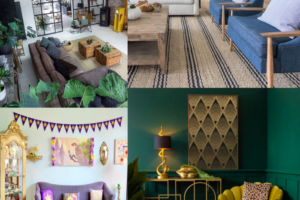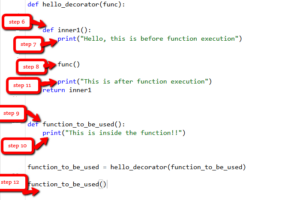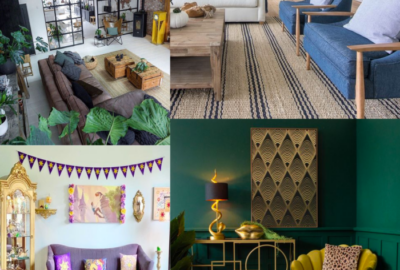How Not to Decorate Your Home: Avoiding Common Mistakes
Poor Lighting Choices
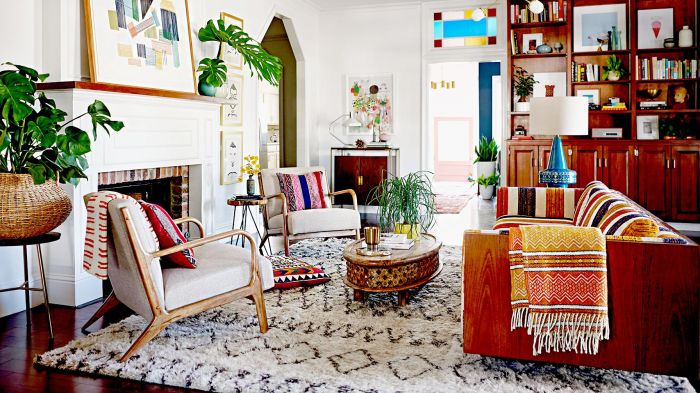
How not to decorate your home – Lighting plays a crucial role in setting the mood and ambiance of a room. While it’s easy to overlook, the wrong lighting choices can significantly detract from your home’s aesthetic appeal. This section will explore the impact of different lighting types and provide practical advice on how to choose the right lighting for your home.
Types of Lighting and Their Impact on Ambiance, How not to decorate your home
The type of lighting you choose can drastically alter the feel of a room. Here’s a breakdown of common lighting types and their effects:
- Ambient Lighting:This is the overall lighting that illuminates a room, often provided by ceiling fixtures or lamps. Ambient lighting should be soft and diffused, creating a general sense of warmth and comfort. Examples include chandeliers, pendant lights, and track lighting.
- Task Lighting:This type of lighting is designed to illuminate specific areas for activities like reading, cooking, or working. Task lighting should be bright and focused, ensuring clear visibility and reducing eye strain. Examples include desk lamps, under-cabinet lighting, and reading lamps.
- Accent Lighting:This type of lighting is used to highlight specific features or objects in a room, such as artwork, sculptures, or architectural details. Accent lighting should be directional and create a sense of drama and interest. Examples include spotlights, wall sconces, and picture lights.
The Importance of Natural Light
Natural light is essential for a healthy and inviting home. It can brighten a space, improve mood, and create a sense of openness. Maximizing natural light is crucial for a well-lit home:
- Window Placement:Strategically placed windows allow maximum sunlight to penetrate the interior. Consider the orientation of your home and the position of the sun throughout the day to optimize window placement.
- Window Treatments:Choose window treatments that allow natural light to flow in while still providing privacy. Sheer curtains or blinds are excellent options for maximizing natural light while maintaining a sense of privacy.
- Light Reflecting Surfaces:Use light-colored walls and furniture to reflect natural light throughout the room. Mirrors strategically placed opposite windows can also amplify natural light.
Lighting Fixtures to Enhance Aesthetic Appeal
Choosing the right lighting fixtures can significantly enhance the overall aesthetic of a room. Here are some examples of lighting fixtures that can add style and elegance to your home:
- Pendant Lights:Pendant lights are a versatile option that can be used in various spaces, from kitchens to dining rooms. They offer a modern and stylish look and can be customized with different materials, shapes, and sizes.
- Chandeliers:Chandeliers are a classic choice for adding a touch of elegance and grandeur to a room. They are available in various styles and sizes, so you can find one that complements your home’s decor.
- Sconces:Sconces are wall-mounted fixtures that provide both functional and decorative lighting. They are perfect for highlighting artwork or adding a touch of ambiance to a room.
- Track Lighting:Track lighting offers flexibility and allows you to direct light precisely where you need it. It is an excellent option for highlighting artwork, showcasing architectural details, or providing task lighting in a kitchen or office.
Overusing Bold Colors and Patterns: How Not To Decorate Your Home

Bold colors and patterns can add personality and vibrancy to a home, but using them excessively can quickly turn a space from inviting to overwhelming. Too much of a good thing can be a recipe for visual chaos, making a room feel cramped and uncomfortable.
The Impact of Bold Colors and Patterns
The overuse of bold colors and patterns can create a visually jarring environment that makes it difficult to relax and enjoy the space. When bold colors and patterns dominate a room, they can create a sense of restlessness and anxiety, making it challenging to focus or unwind.
Avoid the urge to fill every space with knick-knacks and furniture, as it can quickly make your home feel cluttered and overwhelming. If you’re unsure about your design choices, it might be worth considering hiring a professional decorator to guide you.
You can find information on how much to hire a decorator online, which can help you budget for this service. Remember, a well-curated and thoughtfully designed space is much more appealing than one crammed with too much stuff.
Imagine a room painted in a vibrant crimson with a patterned rug featuring equally bold geometric shapes. The constant visual stimulation can be exhausting and create a sense of being trapped within a whirlwind of color and pattern.
Strategies for Strategic Incorporation
To prevent bold colors and patterns from overpowering a space, consider these guidelines:
- Choose a Neutral Base:Start with a neutral color palette for the walls and larger furniture pieces. This creates a calming backdrop that allows bold colors and patterns to be incorporated strategically without overwhelming the space.
- Limit Bold Colors:Instead of painting every wall in a bold color, consider using a single accent wall or incorporating bold colors through smaller elements like throw pillows, artwork, or accessories.
- Select One Focal Point:Choose a single element in the room, such as a piece of furniture or artwork, as the focal point for bold color and pattern. The rest of the room can then be decorated with more subdued elements.
- Scale Matters:When using bold patterns, consider the scale of the pattern and the size of the room. Large-scale patterns can dominate a small space, while smaller-scale patterns can be more manageable in a larger room.
- Balance is Key:When incorporating bold colors and patterns, it’s essential to balance them with neutral elements. This creates a sense of harmony and prevents the space from feeling overwhelming.
Lack of Personal Touches
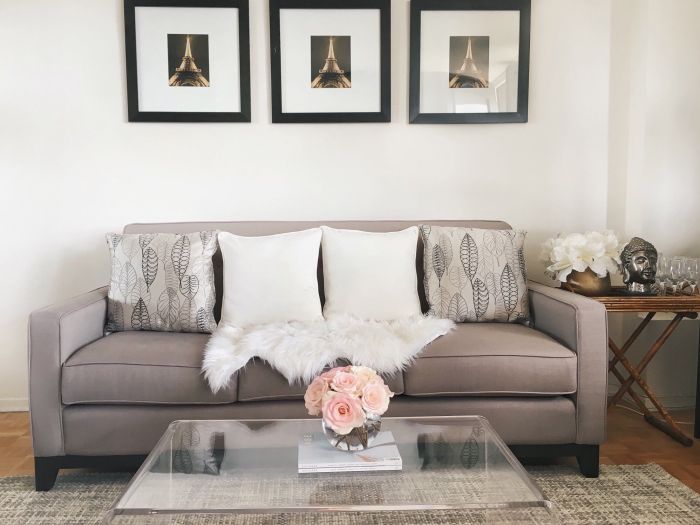
A home without personal touches can feel sterile and unwelcoming. It lacks the warmth and character that make a space truly feel like your own. Adding personal touches is essential for creating a space that reflects your personality and makes you feel comfortable and at ease.
Incorporating Personal Touches
Adding personal touches is about creating a space that feels unique and reflects your personality. This can be achieved through various means, including incorporating items with sentimental value, showcasing hobbies and interests, and displaying family photos and artwork.
- Sentimental Value:Incorporating items with sentimental value can instantly infuse your home with warmth and character. These items can be anything from a childhood teddy bear to a vintage record player or a family heirloom. These items act as conversation starters and evoke memories, making your home feel more personal and inviting.
- Hobbies and Interests:Showcasing your hobbies and interests can add a touch of personality and create a visual representation of your passions. This could involve displaying your favorite books, artwork, musical instruments, or even sports memorabilia. It can transform your home into a space that reflects your passions and makes it feel uniquely yours.
- Family Photos and Artwork:Family photos and artwork are excellent ways to personalize a space and create a sense of warmth and belonging. Displaying cherished family photos can create a sense of history and connection, while showcasing artwork can add a touch of color and personality.
Neglecting Maintenance
A well-maintained home is not only functional but also visually appealing. Neglecting routine maintenance can lead to a decline in a home’s aesthetic appeal, creating an environment that feels cluttered, unwelcoming, and even unhealthy.
The Importance of Regular Maintenance
Regular maintenance tasks, such as cleaning, repairs, and upkeep, play a crucial role in preserving a home’s beauty and value. When a home is well-maintained, it reflects a sense of care and pride in ownership, creating a more inviting and comfortable space for both residents and guests.
- Cleanliness:A clean home is essential for a positive aesthetic. Dust, dirt, and grime accumulate over time, making surfaces appear dull and lifeless. Regular cleaning, including dusting, vacuuming, and mopping, can help maintain a fresh and vibrant look.
- Repairs:Timely repairs are essential to prevent minor issues from escalating into major problems. A leaky faucet, a cracked windowpane, or a loose door handle, if left unattended, can quickly detract from a home’s overall appeal.
- Upkeep:Routine upkeep, such as landscaping, painting, and sealing, helps to preserve a home’s exterior and interior. A well-maintained lawn, freshly painted walls, and sealed countertops all contribute to a more polished and inviting ambiance.
Examples of Neglect’s Impact
Neglecting maintenance can have a detrimental impact on a home’s aesthetic appeal. Here are some examples:
- Unkempt Yard:A yard overgrown with weeds, dead plants, and unmowed grass can make a home look neglected and unwelcoming.
- Cracked Paint:Peeling or cracked paint on walls and trim can create a sense of decay and disrepair.
- Dirty Windows:Smudged or dusty windows can obscure views and make a home feel dark and gloomy.
- Clogged Gutters:Overgrown gutters can lead to water damage, mold growth, and unsightly stains on walls and siding.
Regular Home Maintenance Checklist
Creating a regular maintenance checklist can help ensure that your home remains aesthetically pleasing and functional.
- Weekly:Dusting, vacuuming, mopping, cleaning kitchen and bathroom surfaces, emptying trash cans.
- Monthly:Cleaning windows, mirrors, and light fixtures, checking smoke detectors and carbon monoxide detectors, cleaning out refrigerator and pantry.
- Quarterly:Checking and cleaning gutters, inspecting and cleaning appliances, washing curtains and blinds.
- Annually:Deep cleaning, including carpets and upholstery, inspecting and cleaning furnace and air conditioning unit, sealing and refinishing hardwood floors.
Expert Answers
What are some common home decor trends that should be avoided?
Trends that are overly themed or heavily reliant on specific colors or patterns can quickly become dated and overwhelming. It’s best to stick to classic styles and incorporate trends in small doses.
How can I make my home feel more welcoming and inviting?
Adding personal touches, such as family photos, artwork, and sentimental objects, can instantly transform a space from bland to inviting. Don’t be afraid to showcase your personality and create a space that reflects your unique story.
What is the best way to incorporate color and pattern into my home?
Start with a neutral base and add pops of color and pattern through accessories, textiles, and artwork. This approach allows you to experiment with different looks without feeling overwhelmed.

